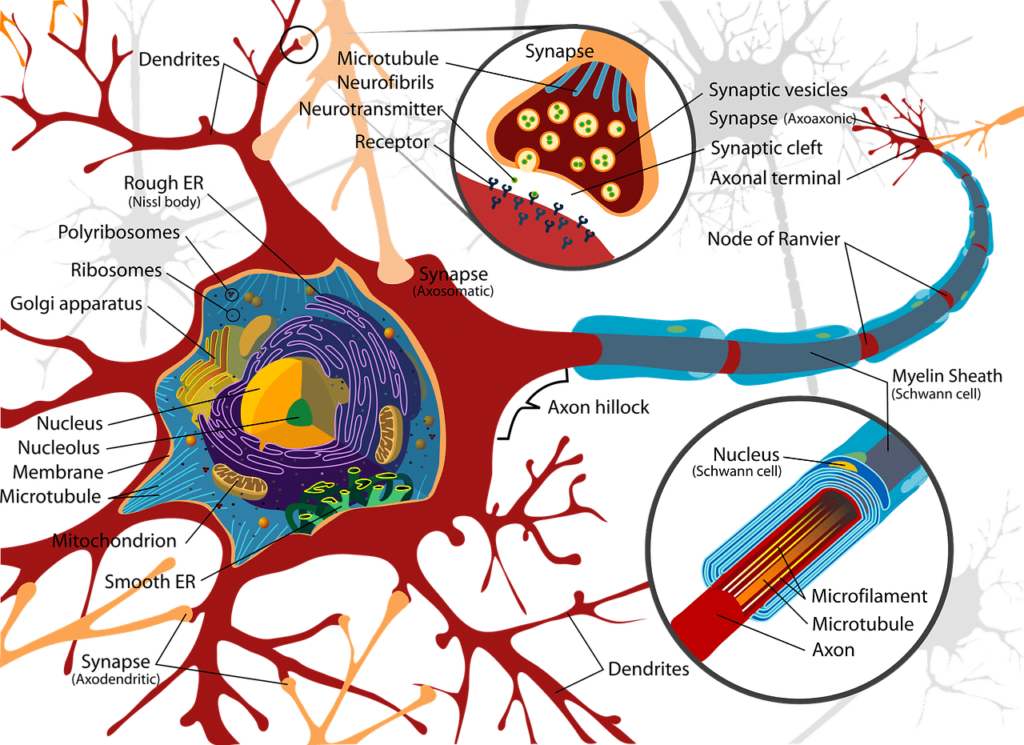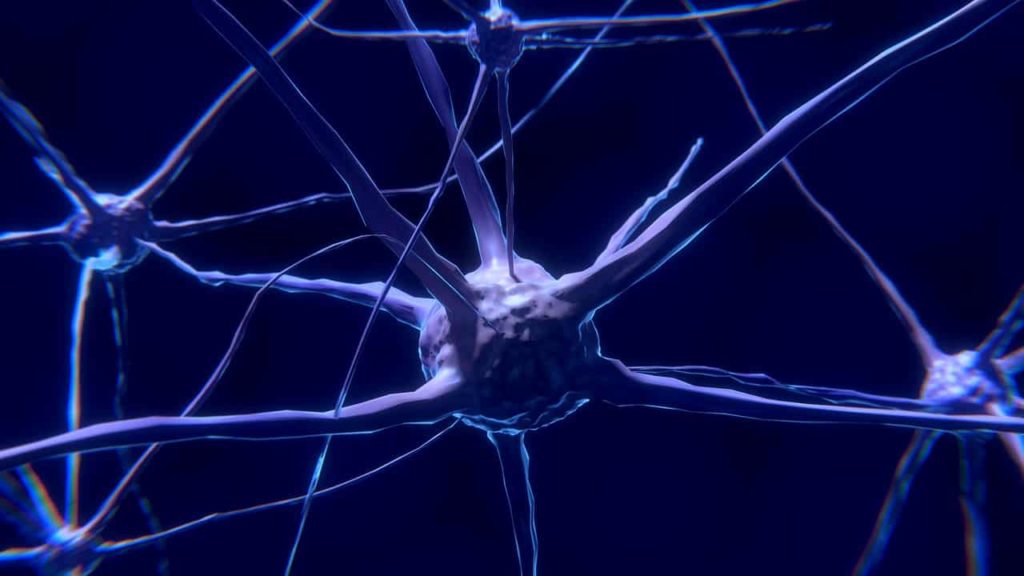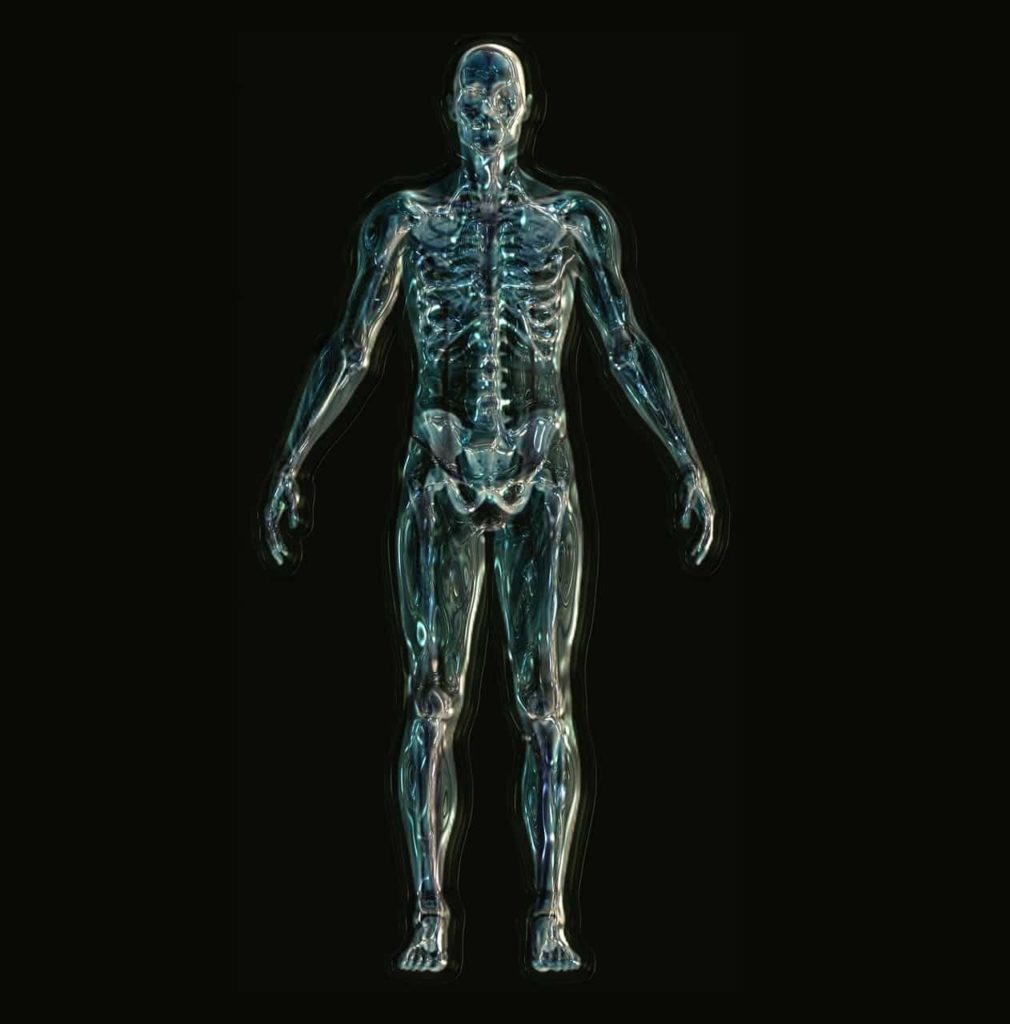The term “CNS Fatigue,” also known as Central Nervous System Fatigue, tends to get thrown around a lot in different strength training circles.
This article is intended to introduce a new way of thinking about “CNS Fatigue” and potentially clear up some common misconceptions on the topic. In the past few years, there’s been a fair amount of research performed on neural fatigue and resistance training. These studies are suggesting and beginning to highlight that what we interpret and call CNS Fatigue may actually be more inline with peripheral fatigue or potentially peripheral nervous system (PNS) fatigue.
At the end of the day, fatigue is fatigue, but it can be important understanding what exactly in the body is fatigued. This knowledge can not only help coaches and athletes understand the body better, but may help with recovery practices.
A Brief Understanding of the CNS and PNS
The central nervous system is composed of the brain and the spinal cord, and the peripheral nervous system is composed of the nerves and ganglia that stem from the CNS. If we had to use a real-life example, think about the CNS as a computer tower and the PNS as the monitor, mouse, and keyboard. The tower comes up with a message, then the extending parts execute on the ask.
In exercise, the CNS is how our body provides itself with actions and feedback under weight, and the PNS works to send messages and recruit the musculature needed to match the ask. For example, the CNS creates the instructions to squat 315 lbs, then the PNS carries out the actions needed on the legs, core, and back musculature to do so.
And while the concept above tends to be well understood in strength circles, this is also where some of the misconceptions lie. The idea that the brain provides messages, then the limbs execute the actions is common knowledge. What happens after the execution when the body is fatigued is where things can get a little choppy.
The idea of CNS Fatigue revolves around the concept of the brain and spinal cord failing to produce a proper stimulus due to being in a state of fatigue.
There are multiple factors that can cause CNS Fatigue (or central fatigue) and a few examples outside of exercise include,
- Elevated seretonin, dopamine, and acetylcholine levels
- A compromised immune system
- Inadequate sleep/nutrition
This list could go on, and many times, the cause of one’s CNS to perform at sub-optimal levels will be highly variable.
Understanding CNS Fatigue, Recovery, and Resistance Training
In terms of exercise and CNS Fatigue, the misconception tends to exist around the idea of what’s actually been fatigued through exercise, and what can cause fatigue. To help understand some of the misconceptions I reached out to Dr. Andy Galpin and Dr. Matthew J. Barnes. Dr. Galpin is an author and professor at CSU Fullteron and Dr. Barnes is a Senior Lecturer at Massey University.
To kick off my talk with Dr. Barnes, I asked if the concept of CNS Fatigue is somewhat over relied on with strength and resistance training,
“I think so. The evidence suggests it does have an effect, however the more recent research suggests it occurs to a greater extent with lower intensity, long duration exercise.
Given all individuals will respond differently to an exercise stress, it is too broad to simply say that we should avoid this or that because CNS fatigue will impair performance and recovery. If we don’t get some sort of acute CNS fatigue should we really expect to get the neural adaptations normally associated with heavy resistance exercise? If a system isn’t stressed it will not adapt. Perhaps it isn’t something to be avoiding, at least acutely; chronic CNS fatigue on the other hand would be a different issue altogether and would potentially lead to over training syndrome.”
To extend off Barnes’ point above, research has suggested that we actually may experience more “CNS Fatigue” following longer duration workouts. For example, this research from 2007 highlighted what happens to the body during a 70-minute long bicep contraction with a 5% maximum voluntary contraction (MVC).
In the research, authors note that during exercise we experience a majority of fatigue within the muscle, but at times, we can experience central fatigue, which is categorized as a decrease in voluntary muscle activation. Upon completion of the 70-minutes, researchers noted a significant decrease in MVC and EMG, which could suggest long duration exercise’s affects on central fatigue
After exercise, there will more than likely be some form of fatigue, and as Dr. Barnes points out, this can be a good thing for training adaptations. When I asked Barnes how he’d explain CNS & PNS fatigue to someone who’d never heard of the concepts he said,
“As far as I know there have not been any studies to identify whether fatigue occurs in the CNS or the PNS (I could be wrong but I haven’t seen any). What is usually done, and what we did, is to identify whether changes are occurring in the entire CNS, this is from the brain down to the neuromuscular junction, or peripherally, which are changes within the muscle itself (peripheral fatigue – not peripheral nervous system fatigue). Most research has used EMG to identify changes in activation across the muscle membrane which tells us whether fatigue is occurring from the brain down to the muscle membrane. If EMG changes then some disruption to the signal from the brain downwards has occurred.
https://www.instagram.com/p/BhGpFBJnl0q/
If EMG does not change but performance does, usually MVC, then that tells us that a change has occurred within the muscle (peripherally) and that the signal from the brain has not changed (no CNS fatigue).”
In Layman’s terms, research has yet to definitively find a consistent root cause in the chain of events that can cause fatigue in both the CNS and peripheral system. Although, we do have tools to create suggestions that help us understand where fatigue may lie post-resistance training, as Barnes points out with changes in MVC and EMG.
CNS Fatigue Symptoms, Misconceptions, and Recent Literature
In Barnes’ quote above, he points out his team did, which is in reference to his 2017 research. Barnes headed a 2017 study that acutely looked at the body’s neuromuscular and endocrine responses to the squat and deadlift.
To many, the deadlift tends to be thought to cause more “CNS fatigue” than other movements, so Barnes and his team put this logic to the test. In their study, they had trained men perform eight sets of 2-reps with 95% of their 1-RM for the squat and deadlift. These men took 5-minute rests in-between sets and completed the movements on separate occasions.
Upon completion of the study, Barnes and his colleagues found that both movements produced a slight fatigue in the CNS, but neither provided a significant difference. Outside of central fatigue, the squat actually showed a slightly higher level of peripheral fatigue, and they speculated this could be due to the greater work required from the quadriceps. In addition, testosterone and cortisol production showed no significant difference between the two exercises.
Going into the study Barnes said, “We went into the study with a completely open mind. We thought the protocol would be pretty hard to complete, but didn’t have any expectations. We assumed that we would see some sort of CNS fatigue, given what others have seen, but as this is the first to use the deadlift, let alone compare it to a squat, we didn’t know what would happen.
The difference in the decrease in peripheral force development between the exercises was initially surprising, but when you think about it makes sense. We looked at the quads only, and these are used more, across a greater ROM, during the squat than the deadlift. How other muscles are affected would be interesting.”
All that being said, it’s still uncertain what exactly is happening post-exercise causing the peripheral fatigue. I asked Barnes on a neuromuscular level, what exactly is going on in the peripheral system/PNS that is causing the feeling of fatigue after exercise? Is it a decrease in motor neuron recruitment, muscular fatigue, or a combination of multiple factors?
“The peripheral fatigue (not PNS fatigue as we didn’t measure that) is likely caused by changes in the way the signal is propagated across and into the muscle. This may be due to an alteration in the way calcium is transported within the muscle or a build-up of metabolic by products [sic] like inorganic phosphate. It may also be caused by a change in the electrochemical gradient across the muscle membrane. Fatigue is fairly complicated and can be caused by a number of factors.
CNS fatigue results in a decrease in motor unit recruitment, firing rates and synchronisation, where this breaks down isn’t clear – the signal could break down in the CNS or in the PNS.”
For example, if you train heavy one day and feel fatigued for a day or two after, more than likely, it’s a combination of factors, and it’s not just CNS fatigue or peripheral fatigue.
And this point leads to another one of the misconceptions that surrounds the thought of CNS fatigue and how it could impact a coach’s/athlete’s programming. The concept or use of CNS fatigue impacting programming can be misguided, and at the end of the day, Dr. Galpin points out,
“It’s semantics. First, it doesn’t really matter if an athlete is fatigued. Fatigue is fatigue, it doesn’t change coaching decisions. I’m irritated by the misconceptions because some assume the muscle is fine and the fatigue is all in the nervous system. This then leads people thinking they can train muscle. Just because muscle is not sore doesn’t mean it’s fine,” Galpin explains.
Another important topic to consider and attenuate off the above point is how one defines fatigue. Fatigue can be highly variable from coach to coach and Dr. Galpin added,
“What do you determine fatigue to be – if CNS is reduced in performance by 3%, is that fatigue? Is 12%? Is 80%? Most would say it is.
On top of the CNS fatigue impacting coaching misconception, the CNS itself has an incredible capacity to recover quickly from highly stimulating activity, but the musculature and motor neurons that create the peripheral fatigue may not. For example, this study from 2016 looked at the acute time-course of corticospinal changes following heavy resistance training. The corticospinal tract are bundles of axons that stem from the cerebral cortex (in the brain) throughout the spine to relay voluntary messages to the limbs through the use of motor neurons.
For this study, researchers were able to produce a 46% motor-evoked potential (ability to produce maximal force) change through the use of heavy strength training in the biceps brachii. When looking at the recovery data and the acute changes, researchers noted that it only took the “CNS” around 20-minutes to return to baseline levels post-training, then surpass it in a state of super-compensation in the following hours after. Researchers noted that muscular fatigue was present for longer periods of time, which could reflect peripheral fatigue.
Although, none of this is to say the CNS doesn’t experience any fatigue following exercise, as we’ve mentioned above, it does. Dr. Galpin explained that in many cases it’s not that the CNS is un-fatigued, it is, but the peripheral system is much more prone to experiencing decrease in performance post-exercise.
To add to this point and based off his research’s suggestions Barnes states “Some neural fatigue should be expected when heavy loads are lifted, irrespective of whether the exercise is the squat or deadlift, and this may impact subsequent exercise performance during the training session. However, peripheral fatigue is probably going to be the main limiting factor for performance in accessory exercises.”
Origins of CNS Fatigue In Research and Powerlifting
It’s really tough to say, and the origins could be variable from person-to-person. Dr. Galpin suggested that possibly some of the older Russian weightlifting coaches could have played a role on the Western hemispere’s interpretation of the CNS fatigue concept, along with researchers such as Supertraining author’s Mel Siff, but these are only speculations.
I asked Barnes if he felt Russian weightlifting played a role in this concept and he added, “It is possible that Russian weightlifting has played a part. I also think that Louie Simmons (who bases a lot of his training methods on the work of Russian weightlifting training and authors such as Verkoshansky, Zatsiorsky and Mel Siff) at Westside has had a lot to do with the popularity of the concept.
The regular rotation of exercises used in his conjugate programs are supposed to minimise chronic CNS fatigue, traditionally they have avoided deadlifting too often or at all as they claim it is more fatiguing than the squat. That is one reason we did our study, to see if that claim is correct. To me, the phrase gets used far too often without there being strong evidence to support those claims. Of course Simmons and other coaches with decades of experience will have observed and monitored hundreds of athletes so will be well aware of what goes on with different types of loading and training – sometimes we don’t necessarily need science to back up what happens in the gym.
The work of Keijo Hakkinen, and his colleagues, in the 80s and 90s really helped lead the way and laid the foundation for what we now know about CNS fatigue and resistance exercise.”
What’s Next for CNS Fatigue Research?
Okay, so if you’ve made it this far in the article, then you’re probably wondering, “Where do we go next?” That was my main question after reading into the highly variable suggestions research has provided us with thus far about CNS and peripheral fatigue.
I asked Barnes, if he had any idea for where current neuromuscular research is heading next? For example, what are things that research is trying to identify and define more thoroughly on the topic of resistance training at a neuromuscular level?
“The next step would be to identify how repeated training bouts affect fatigue and look at an extended time line for recovery. Training does not occur in isolation, the effect of each training session on subsequent sessions needs to be considered so we can optimize recovery and performance. The effect of different exercises and the combination of different exercises would also be useful.
We only looked at a single exercise per session however we don’t know what would happen if we combined several exercises together in a session. Again, we only looked at a short time period after one exercise, the timeline of fatigue is worth further investigation.”
Wrapping Up and Takeaways
Like with most topics in the world of strength and conditioning, there needs to be more research performed on this topic. I’ve included a couple bullet points that summarize the above information, the talks I had with Dr. Galpin and Dr. Barnes, along with the literature that was linked.
- Post-exercise: Fatigue will almost always be present to some degree and this degree will be variable depending on multiple factors.
- Following heavy training: There will most likely be some level of neural fatigue, but to claim it’s all focused around “CNS Fatigue” may be too broad/overreaching.
- Peripheral fatigue may be more present during the times of fatigue following exercise compared to the CNS or central fatigue.
- It’s been suggested that the CNS (in general) is geared to and tends to recover quickly and super-compensate after stressful occasions.
- Deadlifts don’t necessarily cause more CNS fatigue compared to a squat, and major muscle group usage may be one suggestion to predict various levels of CNS and peripheral fatigue post-heavy compounds.
- In literature, most (if not all) neural & resistance training focused studies have focused on acute instances, and there’s a lack of long timeline research.
- It’s important to build your own definition of fatigue.
At the end of the day, fatigue is fatigue, and any level of fatigue present can impact performance whether it’s central or peripheral. What’s most important is understanding that multiple factors are at play during fatigue post-exercise, and more than likely, your “CNS” isn’t that fried after all.



